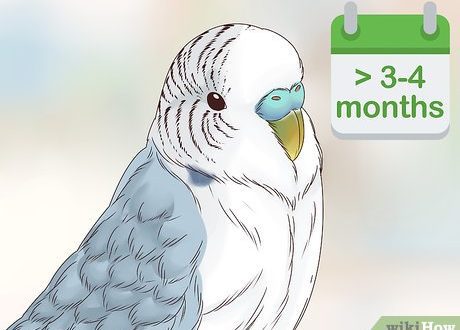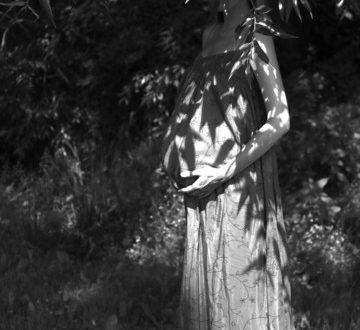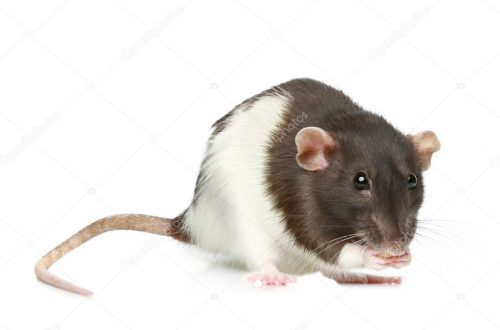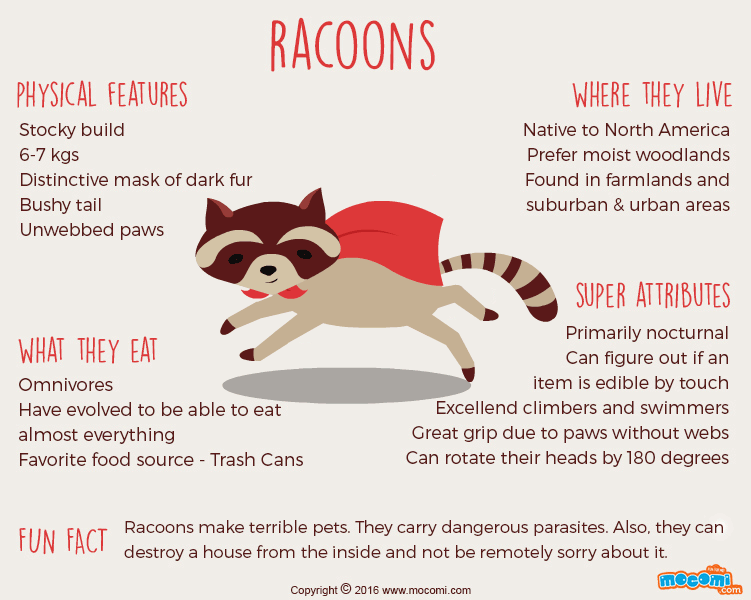
10 interesting facts about raccoons
Well, who doesn’t know raccoons, so to speak, “by sight”? Any of us will immediately imagine a cunning muzzle with a black “Zorro mask”, small grasping paws with tenacious fingers, similar to human ones, a thick fluffy tail with black and white stripes and a funny plump ass sticking out while the raccoon stubbornly tries to get into which – some narrow hole (usually – to steal something “for lunch”).
Recently, many have been trying to get these naughty puffs at home, because they are so cute. (What this often leads to, we will talk a little later).
Do you want to know more about them? Then here are 10 interesting facts about raccoons:
Contents
- 10 Homeland raccoons – North America
- 9. Raccoons love to live in holes, but they don’t know how to dig them.
- 8. Raccoons are immune to most infectious diseases.
- 7. Female raccoons are the most caring mothers
- 6. Raccoons are able to descend upside down and jump from a height of 8-12 meters.
- 5. Raccoons can move quickly even in total darkness.
- 4. Raccoon paws are a versatile survival tool
- 3. Raccoons have a very high IQ
- 2. Raccoons are omnivorous
- 1. Domestic raccoons arrange complete chaos in the house
10 Homeland raccoons – North America
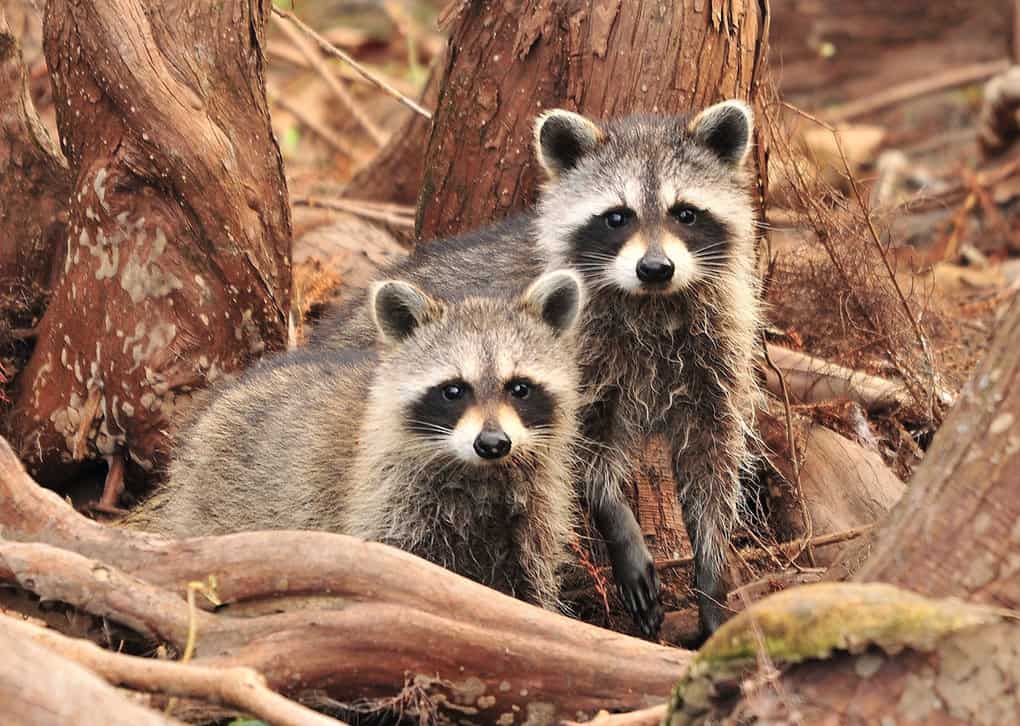 In fact, once raccoons were found only in North and Central America. And they are an excellent example of the fact that a person is not only the cause of the extinction of any kind of animal, but quite the opposite: raccoons “moved” to other continents thanks to our voluntary or involuntary help.
In fact, once raccoons were found only in North and Central America. And they are an excellent example of the fact that a person is not only the cause of the extinction of any kind of animal, but quite the opposite: raccoons “moved” to other continents thanks to our voluntary or involuntary help.
Often they got to Europe, secretly climbing onto a ship, but more often, of course, sailors and merchants brought these funny and very smart animals quite intentionally.
Now they live in a variety of places – from the tropics to very “cool” latitudes (for example, in Russia they “preferred” the Caucasus and the Far East to live).
Nowadays, raccoons quite often choose forests and parks in the suburbs to live. Why? Yes, because here you can get a lot more food (and quite easily and simply – there are garbage dumps). For example, in Canadian Toronto there is a huge number of “urban” raccoons.
9. Raccoons love to live in holes, but they don’t know how to dig them.
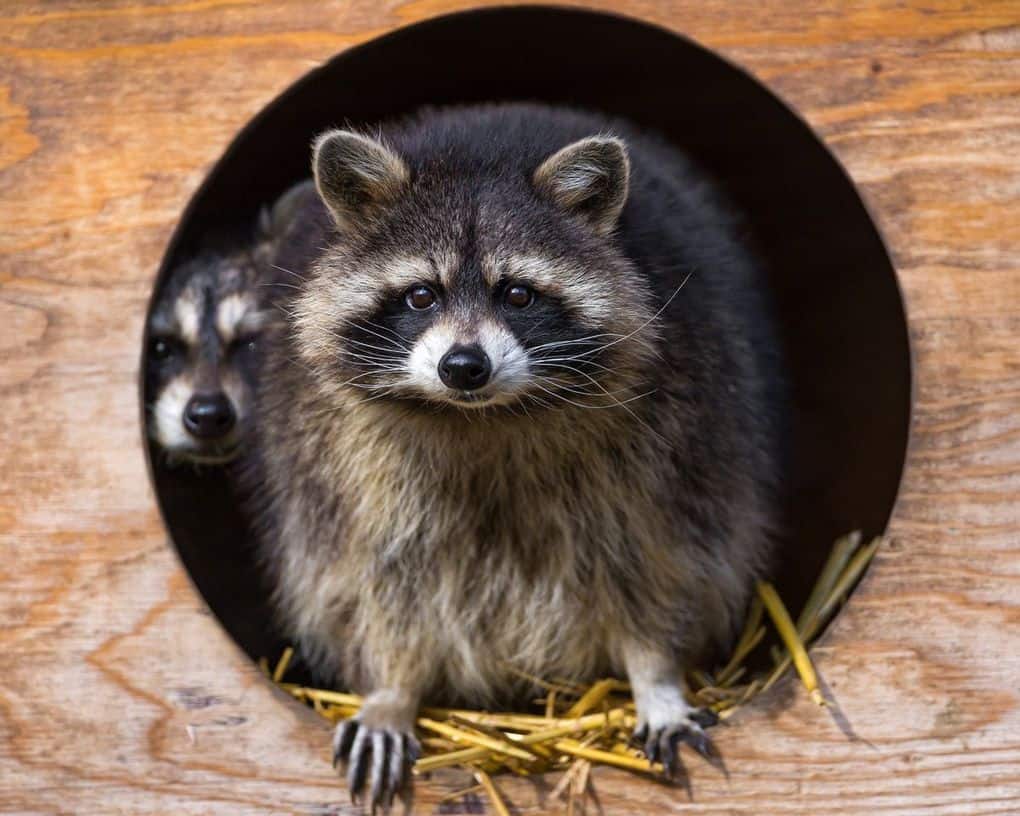 Either raccoons really don’t know how to dig holes for themselves, or they are simply too lazy to do it, but at any opportunity they are happy to occupy someone else’s “real estate”: an abandoned badger hole, a comfortable dry hollow, a roomy and closed crevice in the rock from all sides and etc.
Either raccoons really don’t know how to dig holes for themselves, or they are simply too lazy to do it, but at any opportunity they are happy to occupy someone else’s “real estate”: an abandoned badger hole, a comfortable dry hollow, a roomy and closed crevice in the rock from all sides and etc.
And, by the way, the raccoon prefers to have several such shelters (of course, in case of danger), but he still likes to sleep in the same main thing.
And there must be water somewhere not far from the raccoon’s “estate” – a stream, a pond, a lake (otherwise, where will he rinse his food?).
In their holes or hollows, raccoons sleep peacefully all day (after all, they are, in fact, nocturnal animals), and go fishing late in the evening.
In shelters, they wait out both cold and snowfalls (and striped raccoons living in the northern latitudes hibernate for 3-4 months), sometimes stuffing into a hollow with whole “companies” of 10-14 individuals at a time – it’s warmer, and more fun.
8. Raccoons are immune to most infectious diseases.
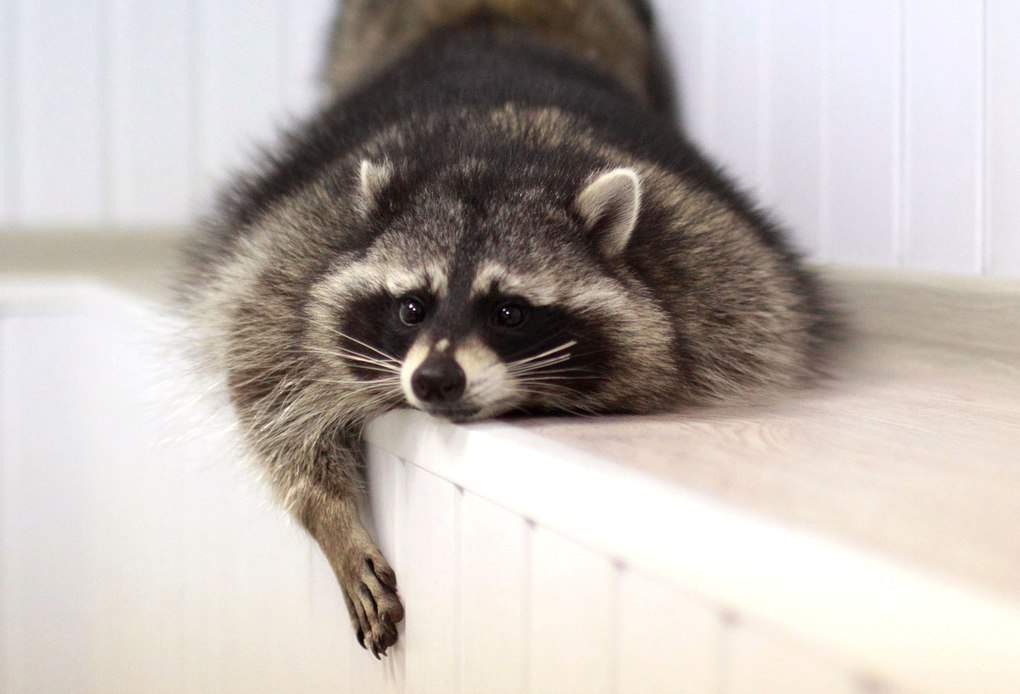 Yes, this is true – raccoons themselves do not suffer from contagious diseases. But, unfortunately, like many other wild animals, they can still be their carriers.
Yes, this is true – raccoons themselves do not suffer from contagious diseases. But, unfortunately, like many other wild animals, they can still be their carriers.
For example, there were cases when raccoons infected domestic dogs with rabies, trying to drive these striped insolent from the territory under their jurisdiction. One bite in a short fight – and, alas, “goodbye, doggie.”
Therefore, when you meet a cute raccoon in the yard, do not rush to stroke it or, moreover, squeeze and pick it up.
7. Female raccoons are the most caring mothers
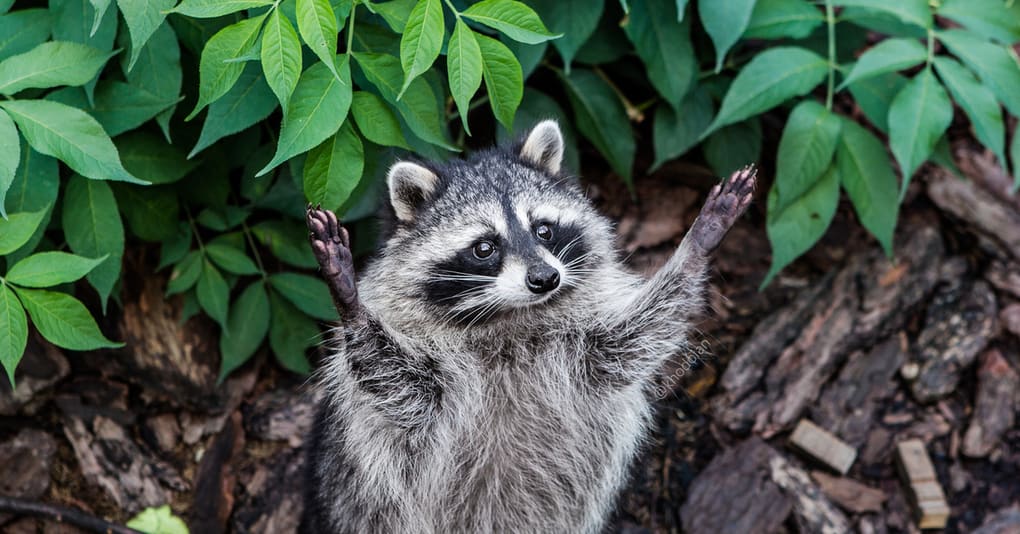 Male raccoons are not engaged in offspring, from the word “completely.” Immediately after mating, the raccoon leaves the female and goes in search of “another love.” Well, the female, having carried from 63 to 2 babies within 7 days, gives birth to them, most often, at the beginning of summer and proceeds to “educate” herself (having previously dispersed all raccoon relatives away).
Male raccoons are not engaged in offspring, from the word “completely.” Immediately after mating, the raccoon leaves the female and goes in search of “another love.” Well, the female, having carried from 63 to 2 babies within 7 days, gives birth to them, most often, at the beginning of summer and proceeds to “educate” herself (having previously dispersed all raccoon relatives away).
Little raccoons are born blind and deaf and weigh only 75 grams (their hearing and sight appear only at the 3rd week of life), so, of course, they require a lot of care. Raccoon mother feeds them up to 24 times a day. And for an emergency, she sometimes has up to 12 emergency shelters prepared.
Raccoons communicate with their mother using whistles or rather piercing screams (the volume and tone of these sounds depend on what they want – food and warmth or affection). She answers them with rumblings and grumblings.
By two months of age, the cubs are already completely overgrown with fur and become quite independent, and from 4-5 months they are considered adults. If the young raccoon managed to survive his first winter, then he will survive further.
6. Raccoons are able to descend upside down and jump from a height of 8-12 meters.
 All raccoons are excellent climbers. They are excellent climbers both on trees and on poles, walls, etc. (in the US and Canada, it is not uncommon for them to climb into the windows of multi-story buildings).
All raccoons are excellent climbers. They are excellent climbers both on trees and on poles, walls, etc. (in the US and Canada, it is not uncommon for them to climb into the windows of multi-story buildings).
Very dexterous fingers and sharp claws allow raccoons to cling to the slightest ledges and roughness. In addition, the feet on their hind legs are also very mobile (they can turn 180º), which allows these nimble chubby ones to do various acrobatic tricks, including quickly descending a tree trunk or wall upside down, climbing thin branches or along stretched cables and ropes, etc.
Well, in case of special need, raccoons are able to jump from a height of 10-12 meters and, without damaging themselves, hide in the nearest bushes (even cats nervously smoke on the sidelines).
5. Raccoons can move quickly even in total darkness.
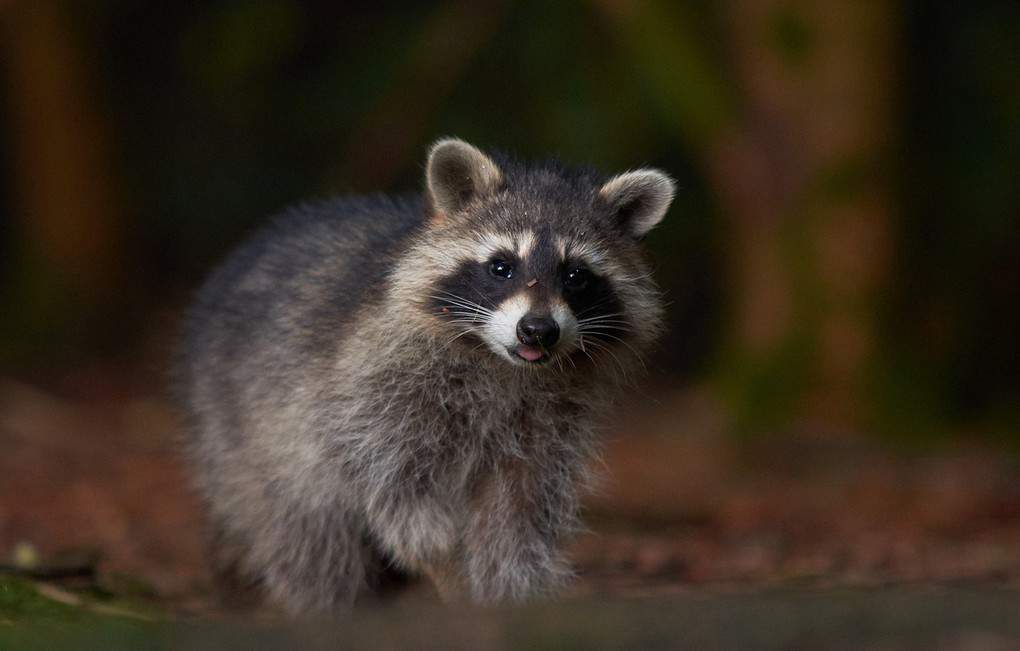 As we said above, raccoons are mainly nocturnal creatures. Moreover, they are able to rush in complete darkness at speeds up to 25 km / h and arrange real group night “brawls”, rattling garbage cans and trying to get food suspended high above the ground.
As we said above, raccoons are mainly nocturnal creatures. Moreover, they are able to rush in complete darkness at speeds up to 25 km / h and arrange real group night “brawls”, rattling garbage cans and trying to get food suspended high above the ground.
And not only (and not so much) special vision and excellent sense of smell help them in this, but also special sensitive receptors located on the stomach, chest, and especially on the paws. They allow raccoons to determine (and with great accuracy!) almost any object that they meet on the way.
That is, in fact, they do not even have to look under their feet, raccoons can run “to the touch.” By the way, these very receptors work best in water, which is why plump people love to “wash” everything so much.
4. Raccoon paws are a versatile survival tool
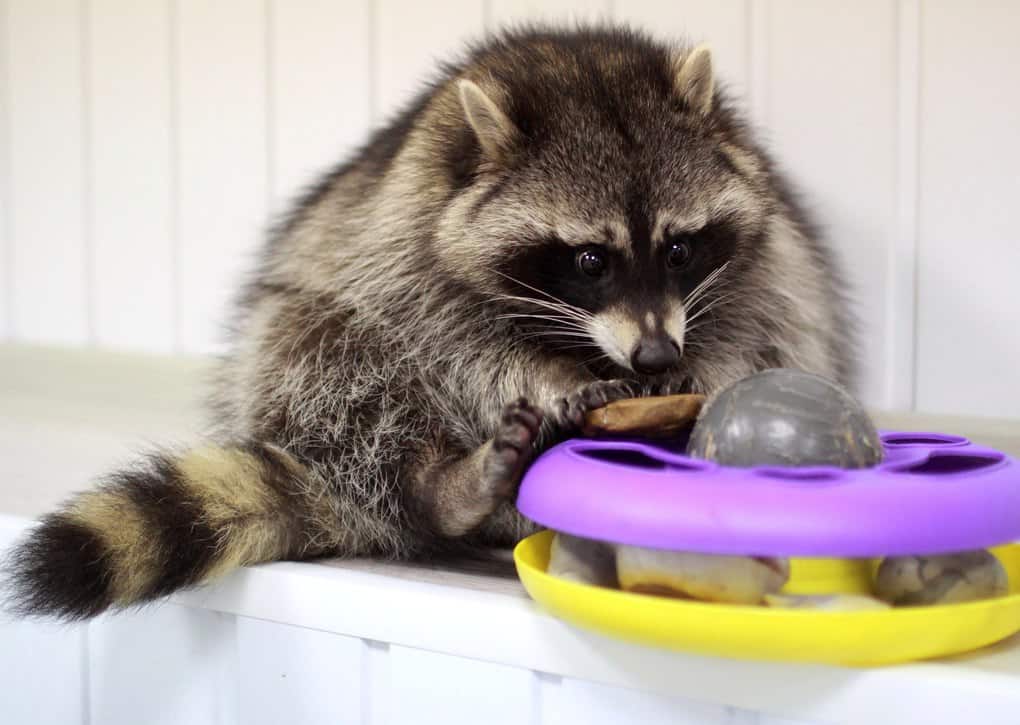 The North American Indians, who noticed that the paws of a raccoon are very similar to human hands, have an old legend that once a raccoon really was a man – cunning, unprincipled, dodgy and thieving.
The North American Indians, who noticed that the paws of a raccoon are very similar to human hands, have an old legend that once a raccoon really was a man – cunning, unprincipled, dodgy and thieving.
Once he “got” even the Supreme Spirit with his behavior, and he turned the thief into an animal, leaving only his hands as a memory of his human past.
And with these “hands”, the raccoon is able not only to grab and hold pieces of food, catch fish, dig crustaceans and snails in the mud, masterfully hold on almost any vertical surfaces, etc., but also easily open container lids, turn door handles and open heck, untie bags, turn water taps and do many other “useful” things.
And, as we have already said, the receptors located on the paws of the raccoon have the greatest sensitivity in water, so the raccoon checks whether the object he found is really edible by rinsing it in the nearest puddle (even if he found it in it).
3. Raccoons have a very high IQ
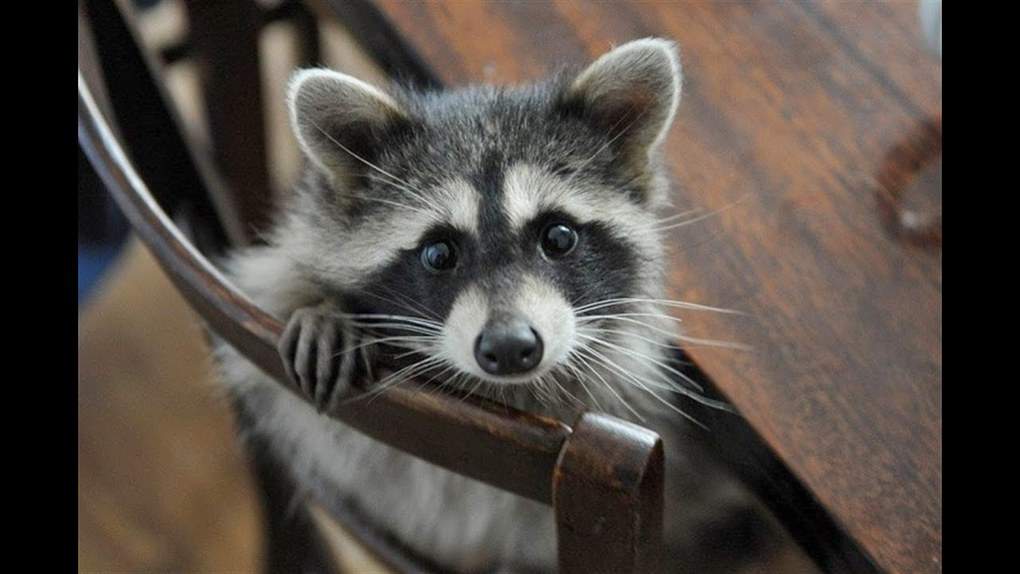 Yes, yes, raccoons are actually very smart – they are much smarter than cats, and their IQ is slightly lower than that of monkeys. In principle, the fact that these cute plump people are far from fools is evidenced even by their abilities listed just above to “master” a variety of objects in a human dwelling.
Yes, yes, raccoons are actually very smart – they are much smarter than cats, and their IQ is slightly lower than that of monkeys. In principle, the fact that these cute plump people are far from fools is evidenced even by their abilities listed just above to “master” a variety of objects in a human dwelling.
Not only that, raccoons are able not only to find ways to get what they like, sometimes even using some kind of improvised (“sub-fingered”) items for this, but also to remember how they did it, so that later someday they will repeat the trick again!
In nature, raccoons also behave quite reasonably (well, unless, of course, their habit of sticking their curious nose anywhere and everywhere is not sufficiently reasonable).
In case of danger, they try to quickly leave a suspicious place. And if this fails, then the raccoon gets into a fight, trying to immediately scare the enemy, or uses some other trick (for example, pretends to want to run away in one direction, but he immediately rushes to the other and hides under a snag) . Well, if that doesn’t work, then the raccoon falls to the ground and pretends to be dead.
2. Raccoons are omnivorous
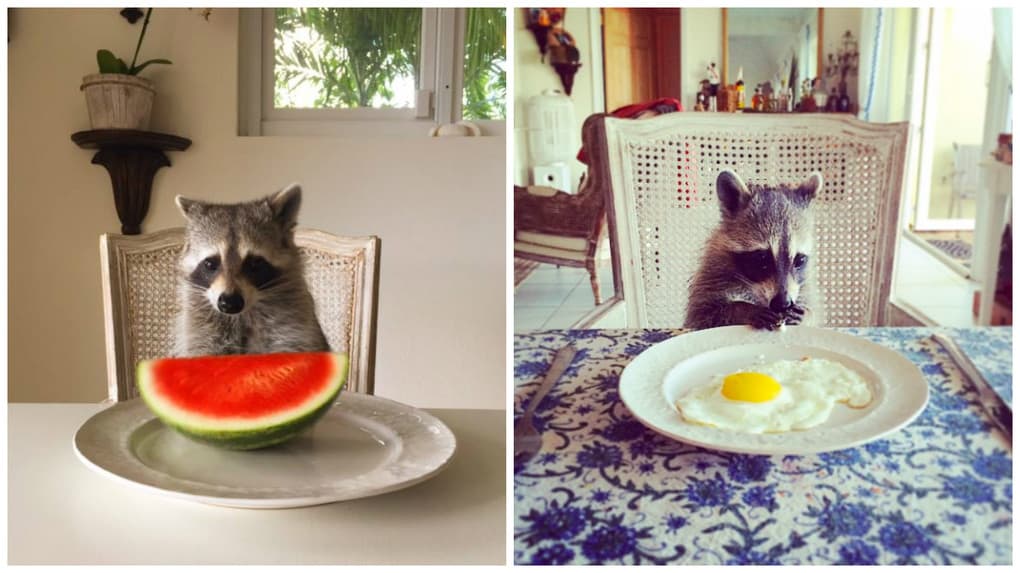 The “ingenuity” of raccoons is especially vivid when searching for food (and this is what they are, in fact, busy with literally from evening to morning).
The “ingenuity” of raccoons is especially vivid when searching for food (and this is what they are, in fact, busy with literally from evening to morning).
Raccoons are considered predators, but in fact they eat everything. In spring and early summer, these fat-assed robbers prefer a “meat diet” (well, simply because the most delicious fruits and berries are not ripe yet, but you want to eat every day): with one jump they catch up with small animals – frogs, lizards, crayfish, etc. ., do not disdain beetles and snakes, they can gobble up bird eggs or even chicks.
Well, at the end of summer – the beginning of autumn, raccoons “turn into vegetarianism”: they eat nuts, berries, vegetables, fruits (and often in the most brazen way they “enclose” vineyards and private gardens right before harvesting).
Neither high fences, nor nets and gratings, nor glass or plastic stop them. If the raccoon decided to get and eat something, then he will do it, you can be sure! Domestic raccoons easily eat pasta and popcorn (and love to kiss a bottle of beer, right down to the “cut”).
1. Domestic raccoons arrange complete chaos in the house
 If you still decide to have a cute raccoon at home, then be prepared – in a couple of weeks you will most likely want to move to hell, leaving your property to a striped “lodger” in a mask.
If you still decide to have a cute raccoon at home, then be prepared – in a couple of weeks you will most likely want to move to hell, leaving your property to a striped “lodger” in a mask.
For a raccoon cannot be forbidden something – he does whatever he wants. And since his curiosity is boundless, he will open, spin and gut everything he can reach (and he can still, believe me).
The raccoon will look into all the cabinets and bedside tables, check the refrigerator (do not hesitate – he will open it!), And he will also constantly run to the bathroom or the kitchen to turn on the water and rinse your things, fruits and berries, bread, your mobile phone, grandmother’s glasses, a doll of a younger sister – yes, everything that he finds in the apartment and can drag off. And before “washing” things that are curious for him, the raccoon will also definitely try them on the tooth.
He will hang out on the curtains, suddenly leap at you from the closet, climb under your covers at night and gently (but very unexpectedly) hug you, etc., etc.
Well… If animals could be put in jail, then 90% of the cells would be filled with raccoons – for petty hooliganism. So first think a hundred times whether you can bear this neighborhood.



